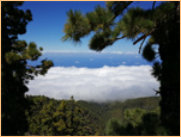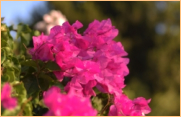
CEDIC team goes La Palma II - Introduction
La Palma is a wonderful place for astrophotography: More than 200 clear nights per year at an altitude of 800m and more than
300 clear nights per year at the top of Roque de los Muchachos, no light pollution, comfortable night temperatures and only
4hours flight distance from Central Europe. With a latitude of 28 degree, all southern objects culminate more
than 20 degree higher than in Central Europe.


- CEDIC Team goes Chile II
- CEDIC Team goes La Palma I
- CEDIC Team goes La Palma II
- CEDIC Team goes La Palma III
- CEDIC Team goes Namibia
- Namibia 2022 - Intro
- #1 - Clusters in Carina
- #2 - Hidden Treasures in Vela
- #3 - Southern Galaxies
- #4 - Emission Nebulae in Centaurus
- #5 - Near South Pole
- #6 - Dark Nebulae in Cir & Lup
- #7 - Nebulae in Ara & Norma
- #8 - Nebulae in Scorpius
- #9 - Open Clusters in Scorpius
- #10 - Highlights in Sagittarius
- #11 - Nebulae in Ophiuchus
During a time span of one week up to eight cameras were running in each night. Planning and coordinating this huge number of
different setups within our team was a true challenge,
which we could only master by using the planning tool of CCD-Guide (
www.ccdguide.com
).
During the day and in the evening the sky was often cloudy, but in the night the sky cleared almost always up and therefore,
we could gather raw data for more than 40 images within our one-week stay. We grouped our results in 4 different parts:
Part #1: Autumn Sky
Part #2: Dust in Taurus
Part #3: Orion’s Nebulae
Part #4: Nebulae in Monoceros
In the past, the infrastructure for high-end amateur astrophotography was underdeveloped, and astrophotographers were forced to
bring their own equipment to the island of La Palma to be able to create astro images with high quality.
It was always our dream to do astrophotography directly at a finca at La Palma with high-quality equipment
without the necessity to book excess baggage.
In the new moon phase in July 2017 the CEDIC team had been already observing at ATHOS Centro Astronómico,
a finca in La Palma, which offers besides an excellent sky and first-class equipment also an outstanding service
(both in astrophotography and in accommodation). Since our first trip in July was suffering from Calima
(a hot, sand laden wind that blows in from the Northern Sahara), the CEDIC team (www.cedic.at), consisting of
Christoph Kaltseis, Bernhard Hubl and Markus Blauensteiner followed the friendly invitation of Kai von Schauroth
for the second time to visit Athos. The second trip was undertaken in the new moon phase in
November 2017 to capture the objects of the winter sky at comfortable ambient temperatures.
We could use the following equipment during our one-week stay:
- ATHOS Observatory including AP175ED (7"), TEC 110FL (4") and Moravian G4-16000 on 10Micron GM3000 HPS
- Baader APO 95/560, Niikon D810A and Nikon D850 on 10Micron GM 1000 HPS
- Pentax SDP 125 and Nikon D810A on Skywatcher EQ6-R
- SW StarAdventurer, AstroTrac and iOptron mounts including a number of DSLRs
with different telephoto lenses and wide-angle lenses





















